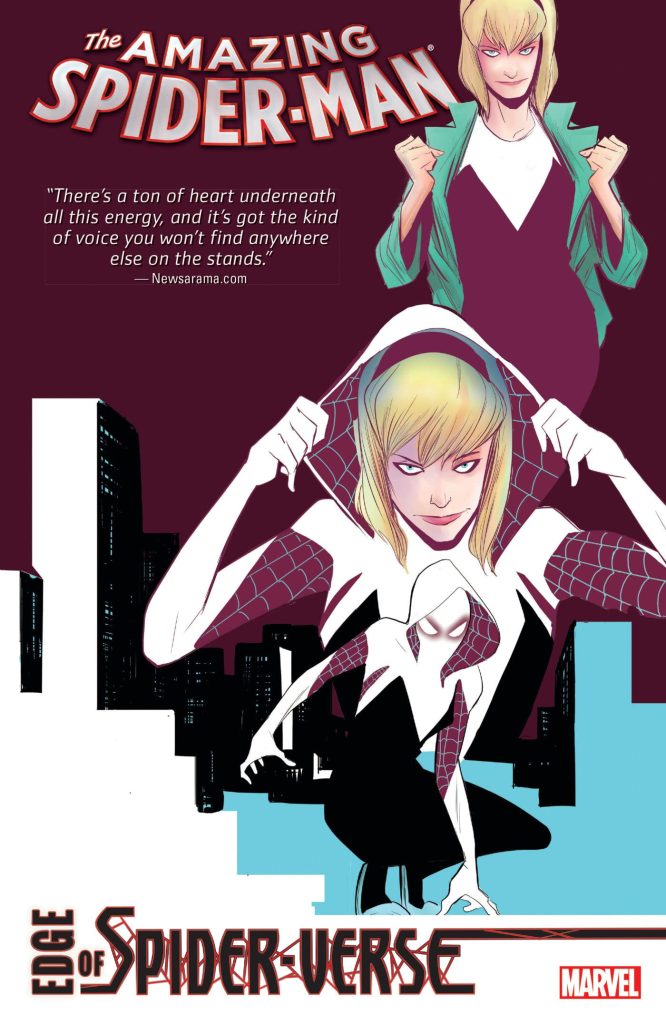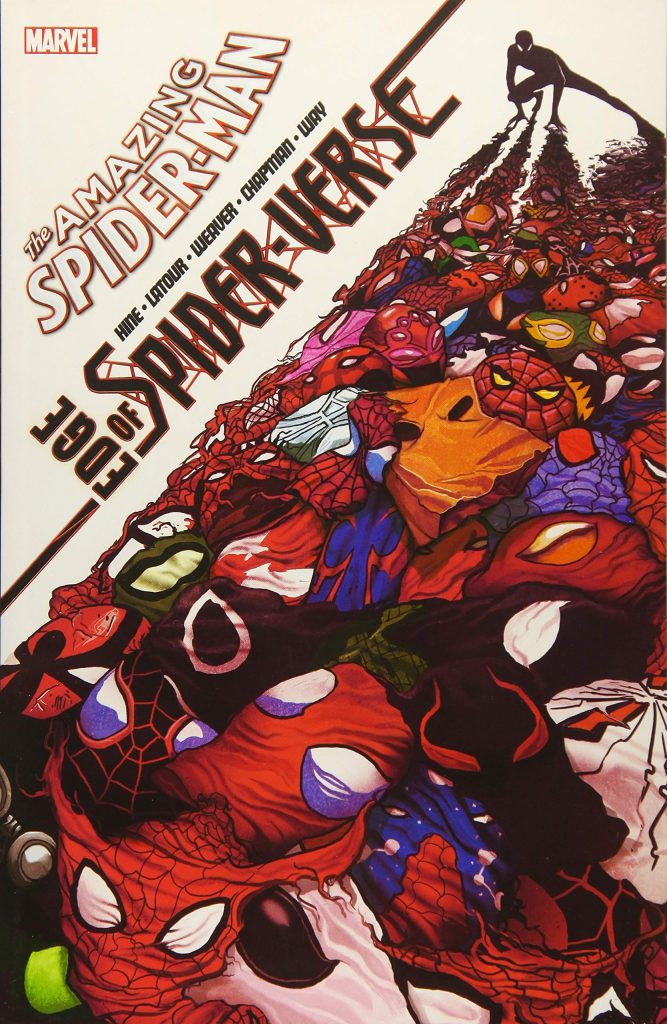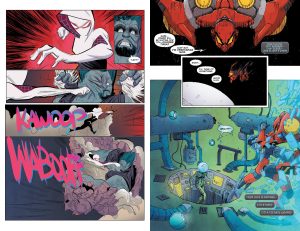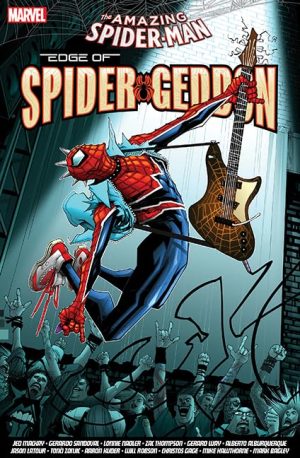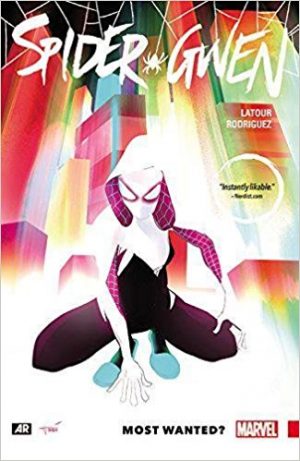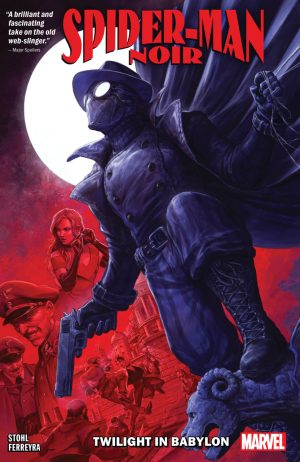Review by Ian Keogh
With the clashing alternate realities of the Spider-Verse crossover on the horizon, Marvel issued Edge of Spider-Verse featuring five solo stories, one of a previously seen Spider-Man variation, and four new creations.
David Hine and Fabrice Sapolsky had written the earlier solo appearances of the pulp Spider-Man Noir, an uncompromising dispenser of vengeance living in the late 1930s. Their version here is noticeably lighter, not coming close to killing anyone, while the threat is provided by Mysterio, here a carnival magician aiming higher. It works, but fans of the earlier outings might find Richard Isanove’s brightly coloured art far removed from the previous mood.
Spider-Gwen was already being primed for a launch into her own series, and Jason Latour and Robbi Rodriguez use this as a dry run. Did Rodriguez come up with the hooded costume design or was he adapting someone else’s concept? Either way, it’s impressively distinctive, as is the use of a white costume, although it must be hell to clean. Latour also nails the spirit of the early Spider-Man as Gwen tries to juggle being an outlaw hero, keeping that from her police chief father and commitment to a band.
Extraordinarily detailed art from Dustin Weaver accompanies Weaver’s script introducing a Japanese micro-biologist who developed his own spider powers and electronically modified costume. It’s a step away from the standard Spider-Man and Weaver introduces a suitably themed menace, but turns up the melodrama a little too high. A nice easter egg is the aping of the designs for old Marvel trading cards to introduce characters.
Skin-crawling rather than wall-crawling characterises the story of Patton Parnel, who comes from an abusive home and develops some repulsive powers after being bitten by a radioactive spider. Clay McLeod Chapman’s intent is satirical, and that’s well sold by artist Elia Bonetti, but Parnel’s not someone designed for the long haul.
Sp//dr is a name that’s going to date so quickly, but otherwise Gerard Way supplies a story hitting all the right emotional beats as the young Peni Parker psychically bonds with a mech suit, controlling it from within. Way supplies a playlist as she goes into action, while artist Jake Wyatt has a suitably wonky style accentuating the weirdness of the whole situation. There’s a greater level of conceptual density to Sp//dr than the remaining characters, but that means when other alternates come calling in the final few pages they don’t seem as strange as the intrusions into the remaining stories.
The idea of alternate Spider-people would rapidly spin completely out of control, but the relative restraint and effective treatments here make for an enjoyable selection. Just in case there’s any confusion, Edge of Spider-Verse without Spider-Man’s name appended to the title is a later graphic novel along the same lines. These stories are also found in Spider-Verse/Spider-Geddon Omnibus.
